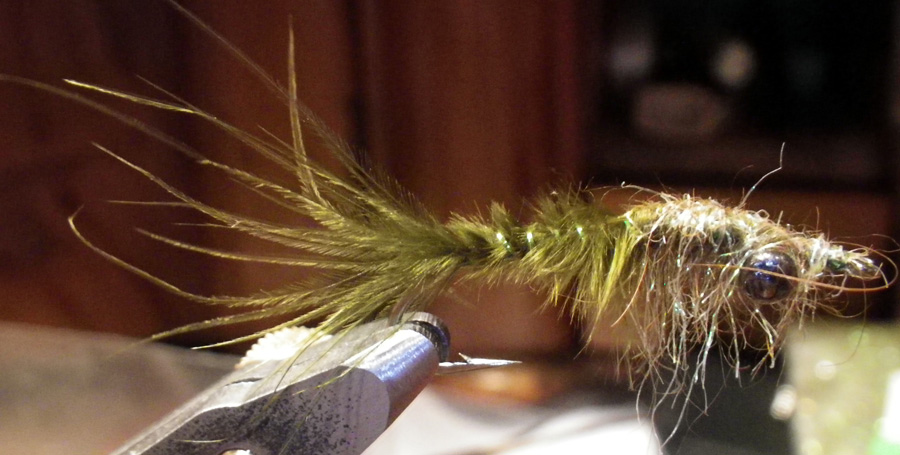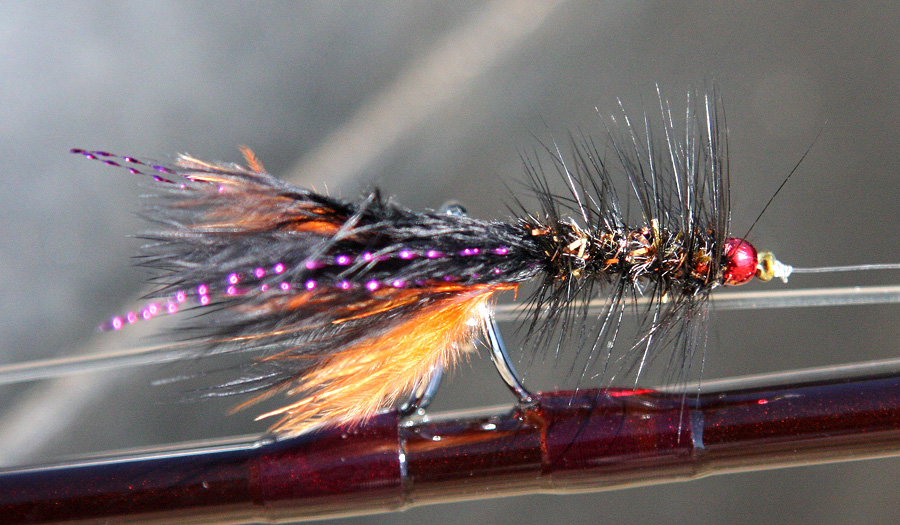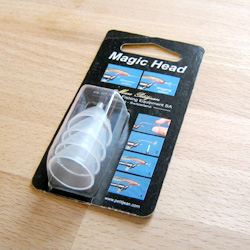Ian Cox recently sent me fascinating YouTube links of a dragonfly nymph hunting backswimmers, mosquito larvae and minnows.
They were shot in an aquarium and the quality of the cinematography and in particular the slow motion footage is outstanding. Being a somewhat squeamish and timid person who has always avoided confronting the harsher aspects of life, I watched them in horrified fascination – and I will not watch them a second time.
http://www.youtube.com/watch?v=r-k-iG9d1go
http://www.youtube.com/watch?v=W557aSVdW_g
Ian has now taken over from Alan Jellis as the editor of that outstanding local publication, The Bobbin, journal of the Durban Fly Tyer’s Guild,
http://www.durbanflytyers.co.za/index.php/the-bobbin/
Our email discussion was in the context of damselfly nymphs and Ian’s latest imitation. He wrote: “It has lead dumbbell eyes mounted under the shank and a bit of shoe stiffening card on top to give the thorax a flatter profile, olive Krystal flash ribbing and a brown hare Ice Dub mix for the thorax.”
Click in images to enlarge

Ian Cox’s latest damselfly nymph imitation
You can see a YouTube video of how damselfly nymphs hunt here. As they lack the jet propulsion and extendible mandibles of the dragonfly nymph, they cannot attack from a distance and need to get much closer to their prey.
http://www.youtube.com/watch?v=Jvtzi9AhBmw
This led to a discussion of creating a wiggle in these flies.
In 1967 Russell Blessing added a marabou tail to the Woolly Worm and the Woolly Bugger was created. When the weighted head of the fly dipped, the tail flipped upward and when the retrieve was continued the opposite happened.

Typical modern Woolly Worm
http://www.flyrodreel.com/fly-fishing/russell-blessing-remembered
In the nineteen eighties Trevor Housby created a similar fly in England and it was named the Dog Nobbler. He crimped and superglued a BB or AAA –sized split shot just behind the hook eye. The split shot was painted black and a yellow eye was then added.
Other fly tyers, seeking to mimic the damselfly nymph’s side-to-side wiggle created extended body patterns with a hinged abdomen
http://www.drakemag.com/message-boards/viewtopic.php?f=6&t=10489&start=0
But success was elusive until they added a plastic lip jutting forwards and downwards like the lip on a bass plug.
In The South African Fly Fishing Handbook (Struik, 1999) Dean Riphagen mentions Fred Arbona Jnr’s Wiggle Damsel: It has a “clear, rigid plastic lip cut into a spade shape. Note that the plastic lip at the front of the pattern gives it a lifelike, side-to-side wiggling motion much like the natural.”
A few years later that outstanding Austrian fly fishing innovator, Roman Moser, simply added a plastic sequin behind a long shank beadhead pattern to produce what he called “Quiver Flies”.
But they quivered rather than wiggled and Marc Petijean took this principle a step further with his “Magic Head” a pliable plastic cone that juts forward over the hook eye.

Marc Petijean’s Magic Head
http://www.youtube.com/watch?v=BgK8nBHrAZ8
http://www.youtube.com/watch?v=Cf5jNYvwFAU
http://dronsworld.blogspot.com/2012/09/magic-head-gugler.html
http://www.petitjean.com/presse/?p=377
Gary Borger’s damselfly nymph has all the attributes you need for a pattern which matches both dragon and damselfly nymphs and adding a little weight and a Magic Head near the eye of the fly will enhance the movement of the soft, flowing marabou tail.
http://www.garyborger.com/2011/04/04/marabou-damsel-nymph/
In an article for a forthcoming article on these two underwater predators for The Bobbin, Ian argues that the abdomen on damselfly nymphs must be tied as slimly as possible and that the retrieve for the two patterns must be different if you are to successfully mimic their movement in the water.
“Dragonfly imitations are fished with a short strip (5 to 8 cm) retrieve, pausing between each strip. You can achieve the same effect with a slow figure of eight retrieve. Dragon flies can be fished throughout the water column so anything from a floating line to a sinking one and all in between will work.
“Damsel flies tend to congregate nearer the surface and given their lack of jet propulsion swim a lot more slowly. They are especially vulnerable on hot summer days as it is then that they congregate in the shallows especially in still water. A floating or intermediate line and a very slow retrieve with tiny strips (never more than 2cm) work best. In fact you will probably do best to leave this fly to a dead drift allowing the occasional twitch to imitate a wriggle. Remember if you fast strip a damsel fly imitation, and let’s face it, who has not, you are imitating a dragonfly and not a damsel”
His comment on flies like Arbona’s Wiggle Damsel and the Petitjean Magic Head series: “Too much like a Rapala for my liking.”
It is much easier to add plastic vanes to create a wiggle like a bass plug on bigger flies and FlyLipps have added a new dimension to a range of patterns tied for freshwater fish like pike and a variety of marine fish.
http://www.pikeflyrod.com/414-flylipps-wiggle-vanes-for-pike-flies.html
http://www.youtube.com/watch?v=wAPJiG0iQPw
The side-to-side wiggle of such flies is facilitated if one uses a Lefty Kreh non-slip mono knot.



